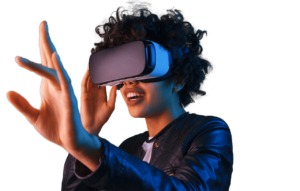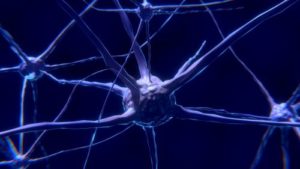What is the real meaning?
Does the scientific content that we read always mean what it claims? As readers and often as fast-paced readers, it’s unsurprising that we swiftly jump to conclusions and make confident inferences based on the headlines and quick skims of scientific studies. These inferences might then slide into conversations with our social groups, who may also believe those inferences to be true. But at the same time, this ‘sharing’ needs to come with a caveat that false information can mold the actual information in a way that does not represent the actual phenomenon and may lead to harmful conclusions and misleading beliefs. In alignment with this view, one of the studies highlighted that misinformation threatens one’s ability to form evidence-based opinions on issues of societal importance.
To share an example, I recently came across a scientific research paper that very interestingly read: “Minding Your Own Business? Mindfulness Decreases Prosocial Behavior for People With Independent Self-Construals.” Instantly, I framed this idea that people with independent self-construals (individuals who follow individualistic values) would experience a decrease in prosocial behavior (behavior through which people benefit others, including helping, cooperating, comforting, sharing, and donating) if they practiced meditation. This seemed different from the usual trends I had observed while reading studies about the effects of mindfulness on human behavior.
Upon reading the paper, I came to two conclusions:
- a) if individuals from independent self-construals (individualistic) practiced mindfulness, it would lead to a decrease in their prosocial behavior, and
- b) if individuals with interdependent self-construals (collectivists) practiced mindfulness, it would lead to an increase in their prosocial behavior.
Essentially, self-construal (one’s identification with individualistic and collectivistic values) will influence how mindfulness relates to prosocial behavior. A closer examination revealed that the researchers tested levels of mindfulness based on just one session of mindfulness and did not measure mindfulness after this session. Secondly, they stated that “Mindfulness could amplify the effects of self-construals on prosocial behavior by enhancing self-awareness,” which links mindfulness to self-awareness, but this claim was neither measured nor tested in the study. Lastly, since this study was conducted during the pandemic, it seems unclear if the researchers controlled other factors (like meditation practice, stress levels, family dynamics, and increased number of individuals who needed help) that could be influencing mindfulness or prosocial behavior, thereby possibly affecting the results.
This led me to wonder about the opinions I would have believed had I just stopped at the headline. This reflection calls for a critical approach to studying scientific articles. When these sensationalized headlines are perceived incorrectly, they could shape our opinions, decisions and behavior.
The two primary stakeholders that can work synergistically to move beyond this quandary are the scientists and the consumers of these findings.
“When these sensationalized headlines are perceived incorrectly, they could shape our opinions, decisions and behavior.”
What can researchers do?
It’s a great privilege to contribute to society through one’s work, and conducting transformative research is one such powerful way. Clearly, this job comes with an immense responsibility of producing authentic, transparent, and effective work that adds to the existing knowledge base and is easily accessible and communicable to the general audience who might not necessarily be familiar with the specific domain being researched. Thus, as researchers, it becomes our responsibility to design and present studies in a way that is authentic to the readers. How we then frame our findings and “take-aways” should be exerted with caution.
A few considerations that can help the researchers tackle this issue are:
- An exhaustive command of the research topics– The researcher must be well-versed with the constructs that they are investigating in terms of the different ways that it’s defined and studied, the previous work that has been done considering those variables, the current trend, how it relates to the other variables being studied- to name a few. This is necessary because it allows them to structure their study within the huge body of literature and helps them frame a narrative for their research, tying up components like why their study is necessary and what research gaps it will fill within the broader field. Instead, having vague ideas may not only present inauthentic information regarding the phenomena but may also disrupt the initial narrative of the paper, therefore promoting misleading conclusions.
- A clear and coherent narrative– The next step that usually follows the assemblage of ideas is the presentation of those ideas in a narrative that makes sense to the scientific community and the general audience. The authors must strike this balance while ensuring they present their research in an accessible language. This can be achieved by using active voice, correct punctuation, framing short sentences, and omitting unnecessary words. Having clarity of concept is equally important as having efficient communication skills to present ideas.
- Considering diverse approaches to study the phenomena– Often in the fields like psychology, researchers usually study phenomena that are not tangibly observable, like emotions, motivations, mindfulness, and happiness. Hence, it becomes essential to design robust studies that can capture these phenomena as they occur and produce reliable and valid results. The researchers could adopt a multi-method approach to investigate the questions to gain a broader sense of the construct. For instance, initially in cultural studies, the core methodology adopted to study cultural differences was ethnography (i.e. collecting data through observation and interviews), which is later used to conclude how societies function. However, it becomes difficult to study individual-level differences on varied psychological constructs that might arise due to cultural differences. And this would lead to generalizing the findings to an entire culture. To overcome this and similar barriers, the current cultural psychologists have increasingly started to use a multi-method approach in studying culture, like experiments, daily diary designs, physiological data collection, etc. This stresses on the fact that to produce a valid and reliable study, it’s critical to design robust studies, measure the constructs appropriately, and analyze the data correctly.
“Hence everything we read should be approached with a critical stance and active engagement with the content.”

What can the readers do?
Similarly, as readers, we too hold the responsibility of examining the information mindfully before considering it authentic. Hence everything we read should be approached with a critical stance and active engagement with the content. This opens the avenue to understand a phenomenon through a diverse and multi-perspective lens, making us less likely to believe something at its face value.
It’s all the more crucial to be cautious with studies that make medical or therapeutic claims. For instance, a scientific paper that I recently read on the efficacy of guided imagery on PTSD mentioned the technique as one that utilizes active imagination to elicit positive feelings and images to reach one’s desired goals or to elicit desirable physical responses like reduced stress, anxiety, etc. However, without prior knowledge, or any clarification from the authors, the readers may confound the technique as mere positive or magical thinking to reach one’s goals. Some may even confuse it with mental imagery, which is deliberately eliciting prior stressful events that may exacerbate PTSD symptoms. Therefore, it’s crucial to be conscious of the authenticity of the content we consume and, more importantly, share.
Hence, a few ideas that the readers can consider while reading scientific studies include consulting various resources/studies on similar topics before making any decisions or claims about the information, checking the reliability of the source that presents the information, reading thoroughly and critically by asking themselves questions like “How does this relate to real life?,” “How would the researchers have studied/measured this particular construct?,” “Do other studies also talk about similar trends?.” Such a thorough engagement with the content can help us think through the information we consume.
Concluding thoughts
This brings us to an idea that stresses the active use of critical thinking, consideration of multiple perspectives, and thorough examination from researchers studying various phenomena and the readers consuming the information about those phenomena. With an adoption of a structured framework around how we approach conducting/presenting research and how we frame conclusions while reading scientific ideas, we have a possibility, if not an obligation, to move beyond the headlines

Arushi Srivastava
Arushi is a recent Master’s graduate in Applied Psychology from Tata Institute of Social Sciences, Mumbai, and a prospective Ph.D. applicant to Social Psychology programs. She is currently working as a Research Assistant at the Emotions and Emotion Regulation Lab, at UC Berkeley, and James Cook University. One of her research interests is to explore how mindfulness can help enhance well- being and interpersonal/societal relationships. She herself has been a mindfulness practitioner for three years now and enjoys trying different types of meditation practices.
References
Eisenberg, N., Eggum-Wilkens, N. D., & Spinrad, T. L. (2015). The development of prosocial behavior.
Markus, H. R., & Kitayama, S. (1991). Culture and the self: Implications for cognition, emotion, and motivation. Psychological review, 98(2), 224.
Poulin, M. J., Ministero, L. M., Gabriel, S., Morrison, C. D., & Naidu, E. (2021). Minding your own business? Mindfulness decreases prosocial behavior for people with independent self-construals. Psychological science, 32(11), 1699-1708.
Strauss, J. L., Calhoun, P. S., & Marx, C. E. (2009). Guided imagery as a therapeutic tool in posttraumatic stress disorder. Post-Traumatic Stress Disorder, 363-373.
Steil, R., Fischer, A., Gutermann, J., & Rosner, R. (2022). Mental imagery in adolescent PTSD patients after child abuse: a comparison with matched healthy controls. BMC psychiatry, 22(1), 1-14.
Van der Linden, S., Leiserowitz, A., Rosenthal, S., & Maibach, E. (2017). Inoculating the public against misinformation about climate change. Global Challenges, 1(2), 1600008.
Related Posts

Mediating Mindfulness-Based Interventions with Virtual Reality in Non-Clinical Populations: The State-of-the-Art (Failla et al., 2022)
By providing an immersive, engrossing, and controlled visual and auditory experience in which participants can practice mindfulness techniques, Virtual Reality (VR) systems can create immersive, ecologically valid, first-person experiences that can even tap into physiological reactions that align with real-world experiences.

Trait Mindfulness and Relationship Satisfaction: The Role of Forgiveness Among Couples (Roberts et al., 2020)
The researchers were interested in understanding if forgiveness acts as a mechanism by which mindfulness relates to relationship satisfaction. They speculated that being mindful would allow individuals to be aware of their own and their partners’ emotions in a non-judgmental and non-reactive way. The increased awareness would make people more forgiving of partner transgressions, thereby enhancing relationship satisfaction.

Exploring the Nexus between Mindfulness, Gratitude and Wellbeing Among Youth with the Mediating Role of Hopefulness: A South Asian Perspective (Ali et al., 2022)
Emerging studies are highlighting the effectiveness of mindfulness, gratitude and hopefulness as positive psychological tools in helping people cope with anxiety and stress. These practices have also been considered beneficial in enhancing psychological health and well-being.

An electrophysiological investigation on the emotion regulatory mechanisms of brief open monitoring meditation in novice non-meditators (Lin et al., 2020)
Despite growing knowledge that mindfulness meditation can enhance emotional wellbeing, very little is known about how it all works. How exactly does the act of meditation help us deal with the emotional rollercoaster of everyday life? Is mindfulness training actually “transferrable” to real world situations? What’s going on in the brain? Can we even measure it?

Self-compassion, quiet self, and the brain (Liu et al., 2020)
How does self-compassion protect depressed adolescents? Quieting the self may be the key.

When Less is More: Mindfulness Predicts Adaptive Affective Responding to Rejection via Reduced Prefrontal Recruitment (Martelli et al., 2018)
A study led by Alexandra Martelli investigated whether more mindful individuals (based on self-report measure scores) would respond to social rejection with less distress and if certain neurological mechanisms in the brain’s prefrontal cortex can potentially explain the role of mindfulness in reduced social distress.

Brief mindfulness session improves mood and increases salivary oxytocin in psychology students (Bellosta-Batalla et al., 2020)
A research team from Valencia, Spain recently investigated the effects of a brief mindfulness-based intervention on both mood and biological markers on a sample of health professional students.

Neurophysiological and behavioural markers of compassion (Kim et al., 2020)
A new study by Kim and colleagues explored how compassion-based training can affect two self-regulatory styles and its relationship to neural, physiological, and behavioral responses.

Yoga and Mindfulness as a Tool for Influencing Affectivity, Anxiety, Mental Health, and Stress among Healthcare Workers: Results of a Single-Arm Clinical Trial (Torre et al., 2020)
Torre and colleagues recruited 70 HCWs from two hospitals in Rome, Italy for a 4-week course in yoga and mindfulness.

Mindfulness Buffers the Impact of COVID-19 Outbreak Information on Sleep Duration (Zheng et al., 2020)
A team of researchers based in the perceived epicenter of the virus, Wuhan, China, recently tested whether a brief mindfulness intervention delivered through an app could be effective for reducing anxiety and protecting nightly sleep during the unfolding pandemic.

Intrapsychic Correlates of Professional Quality of Life: Mindfulness, Empathy, and Emotional Separation. (Thomas & Otis, 2010).
Mindfulness practices can enhance a therapist’s ability to intentionally and flexibly regulate attention as well as emotional reactivity which has been demonstrated to influence burnout.

Physician Anxiety and Burnout: Symptom Correlates and a Prospective Pilot Study of App-Delivered Mindfulness Training (Roy et al., 2020)
A new study investigated whether a brief mindfulness training designed to reduce physician burnout could be delivered through a smartphone app.

Role of Yoga and Mindfulness in Severe Mental Illnesses: A Narrative Review (Sathyanarayan et al., 2019)
The current study reviewed the wider scientific literature for the role of yoga and mindfulness interventions in the treatment of severe mental illness.

A Randomized Controlled Trial Examining the Effect of Mindfulness Meditation on Working Memory Capacity in Adolescents (Quach et al., 2015)
The amount of research involving mindfulness interventions has grown exponentially; however, only in the last decade has mindfulness research involving adolescents rapidly increased.

The Differential Moderating Roles of Self-Compassion and Mindfulness in Self-Stigma and Well-Being Among People Living with Mental Illness or HIV (Yang et al., 2016)
Mindfulness and self-compassion are theorized to disrupt the maladaptive repetition of negative thoughts and emotions for patients with chronic or mental illnesses, who are particularly susceptible to psychosocial distress.

Neural Stress Reactivity Relates to Smoking Outcomes and Differentiates Between Mindfulness and Cognitive Behavioral Treatment (Kober et al., 2016)
There is promising evidence that 70% of smokers would like to quit but less than 5% of unassisted attempts at quitting are actually successful.

Mindfulness-Based Relapse Prevention for Stimulant Dependent Adults: A Pilot Randomized Clinical Trial (Glasner et al., 2016)
In a recent pilot study by Suzette Glasner, Ph.D. and her team at the Integrated Substance Abuse Programs at the David Geffen School of Medicine at UCLA, they evaluated the effects of Mindfulness-Based Relapse Prevention (MBRP) on reducing relapse susceptibility among stimulant-dependent adults receiving a contingency management (CM) intervention.

Long-term Mindfulness Training is Associated with Reliable Differences in Resting Respiration Rate (Wielgosz et al., 2016)
A major implication of the study suggests the distal effects of intensive retreat practice on respiration rates, a benefit not necessarily conferred by a brief, but full-day meditation session.

Examination of Broad Symptom Improvement Resulting From Mindfulness-Based Stress Reduction in Breast Cancer Survivors: A Randomized Controlled Trial (Lengacher et al., 2016)
Researchers are exploring mindfulness-based interventions as a long-term treatment options to address the multitude of symptoms after cancer has been treated.

Epigenetic Clock Analysis in Long-term Meditators (Chaix et al., 2017)
While the scientific study of mindfulness has exponentially increased over the past few decades, only recently has the scientific community focused on the effects of meditation training on biological aging.
